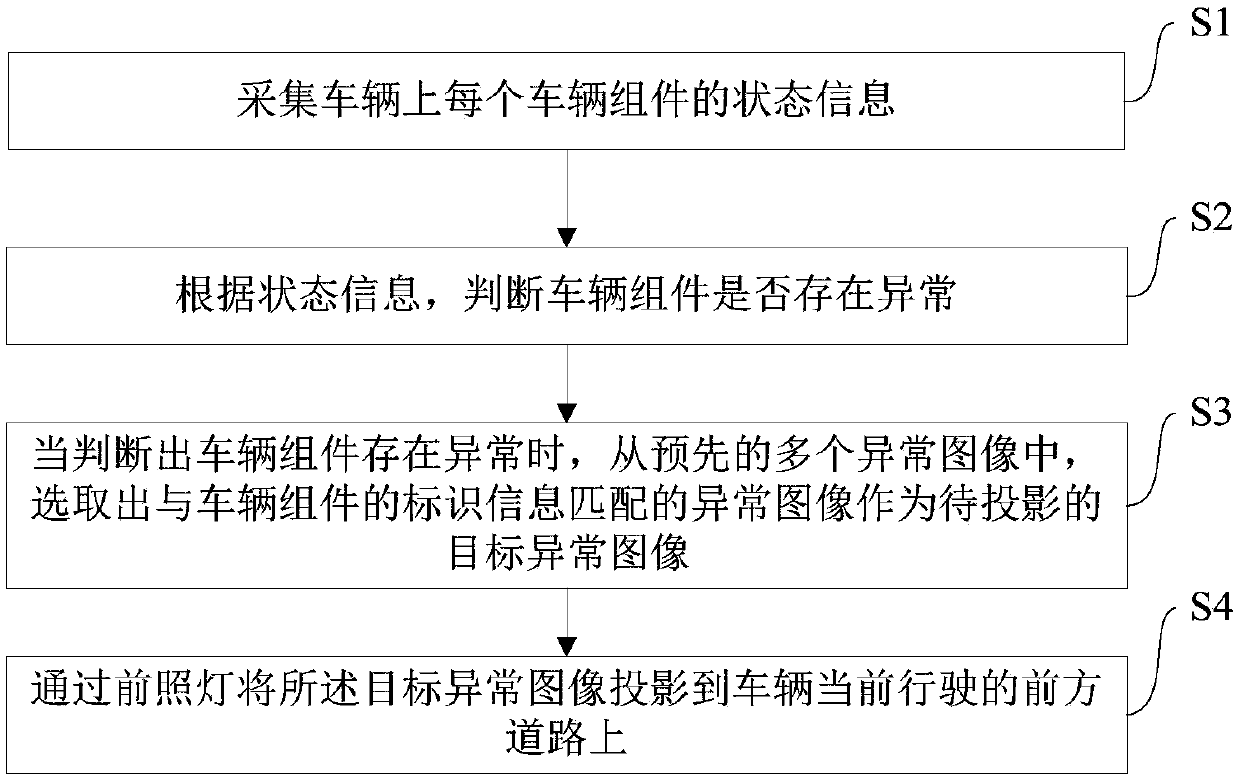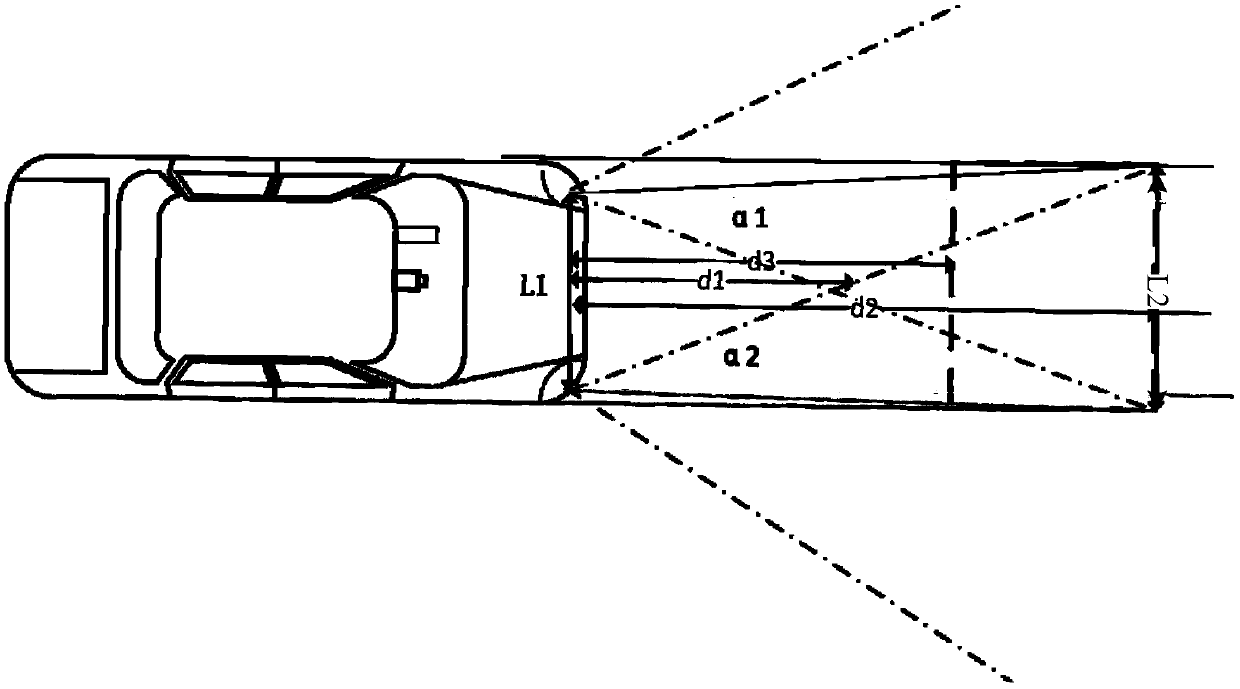Headlamp based projection method and device
A headlight and projection technology, applied in the field of automobiles, can solve problems such as high risk, unfavorable driving safety, and inability to obtain vehicle road conditions, so as to achieve the effect of improving safety
- Summary
- Abstract
- Description
- Claims
- Application Information
AI Technical Summary
Problems solved by technology
Method used
Image
Examples
Embodiment Construction
[0030] Embodiments of the present invention are described in detail below, examples of which are shown in the drawings, wherein the same or similar reference numerals designate the same or similar elements or elements having the same or similar functions throughout. The embodiments described below by referring to the figures are exemplary and are intended to explain the present invention and should not be construed as limiting the present invention.
[0031] The headlamp-based projection method, headlamp-based projection device, electronic equipment, and non-transitory computer-readable storage medium proposed in the embodiments of the present invention are described below with reference to the accompanying drawings.
[0032] figure 1 is a flowchart of a projection method based on headlights according to an embodiment of the present invention. Such as figure 1 As shown, the method includes the following steps:
[0033] S1, collecting status information of each vehicle compo...
PUM
 Login to View More
Login to View More Abstract
Description
Claims
Application Information
 Login to View More
Login to View More - R&D
- Intellectual Property
- Life Sciences
- Materials
- Tech Scout
- Unparalleled Data Quality
- Higher Quality Content
- 60% Fewer Hallucinations
Browse by: Latest US Patents, China's latest patents, Technical Efficacy Thesaurus, Application Domain, Technology Topic, Popular Technical Reports.
© 2025 PatSnap. All rights reserved.Legal|Privacy policy|Modern Slavery Act Transparency Statement|Sitemap|About US| Contact US: help@patsnap.com



